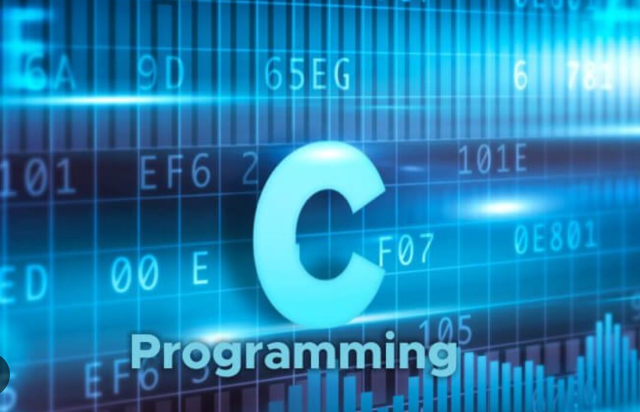
Best C Programming Training and Placements institute in RT Nagar |
C Programming:
What is C Programming?
C is a general-purpose, procedural programming language developed by Dennis Ritchie in 1972 at Bell Labs. It is one of the most widely used programming languages, forming the foundation of many modern languages like C++, Java, and Python.
✅ Features:
✔ Fast & Efficient – Low-level access to memory, minimal runtime.
✔ Portable – Runs on various platforms (Windows, Linux, Mac, Embedded Systems).
✔ Procedural & Structured – Uses functions and control flow structures.
✔ Widely Used – System programming, game development, embedded systems.
Basic Syntax of C
#include <stdio.h> // Standard I/O library
int main() {
printf(“Hello, World!\n”); // Prints output to screen
return 0; // Returns 0 to indicate successful execution
}
Explanation:
#include <stdio.h>→ Header file for input/output functions.int main()→ Main function, execution starts here.printf("Hello, World!\n");→ Prints text to the console.return 0;→ Ends the program successfully.
Key Features of C
1️⃣ Data Types & Variables
| Data Type | Size | Description |
|---|---|---|
int | 4 bytes | Stores integers |
float | 4 bytes | Stores decimals (single precision) |
double | 8 bytes | Stores decimals (double precision) |
char | 1 byte | Stores single characters |
void | 0 bytes | Represents no value |
🔹 Example:
int age = 25;
float pi = 3.14;
char grade = 'A';
2️⃣ Operators in C
✔ Arithmetic: +, -, *, /, %
✔ Relational: ==, !=, >, <, >=, <=
✔ Logical: &&, ||, !
✔ Bitwise: &, |, ^, <<, >>
✔ Assignment: =, +=, -=, *=, /=
🔹 Example:
int x = 10, y = 5;
int sum = x + y; // sum = 15
3️⃣ Control Flow Statements
Conditional Statements
int num = 10;
if (num > 0) {
printf("Positive number");
} else {
printf("Negative number");
}
Loops
// For Loop
for (int i = 0; i < 5; i++) {
printf("%d ", i);
}
// While Loop
int x = 0;
while (x < 5) {
printf(“%d “, x);
x++;
}
// Do-While Loop
int y = 0;
do {
printf(“%d “, y);
y++;
} while (y < 5);
4️⃣ Functions in C
#include <stdio.h>
// Function declaration
int add(int a, int b) {
return a + b;
}
int main() {
int result = add(5, 3);
printf(“Sum: %d”, result);
return 0;
}
✔ Types of Functions:
✅ Built-in Functions – printf(), scanf(), strlen(), pow().
✅ User-Defined Functions – Custom functions written by programmers.
5️⃣ Pointers & Memory Management
✔ Pointers – Store the address of a variable.
✔ Dynamic Memory Allocation – malloc(), calloc(), realloc(), free().
🔹 Example:
int x = 10;
int *ptr = &x; // Pointer stores address of x
printf("%d", *ptr); // Dereferencing, prints value of x
6️⃣ Arrays & Strings
// Integer Array
int numbers[5] = {1, 2, 3, 4, 5};
// String (Character Array)
char name[] = “John”;
printf(“%s”, name);
7️⃣ Structures & Unions
✔ Structures – Groups different data types together.
✔ Unions – Similar to structures, but shares memory.
struct Student {
char name[50];
int age;
};
int main() {
struct Student s1 = {“Alice”, 20};
printf(“Name: %s, Age: %d”, s1.name, s1.age);
return 0;
}
8️⃣ File Handling in C
✔ Opening, Reading, Writing files.
FILE *file;
file = fopen("data.txt", "w");
fprintf(file, "Hello, File!"); // Writing to file
fclose(file);
Advanced C Concepts
🔹 Recursion – Function calling itself.
🔹 Bit Manipulation – Low-level bitwise operations.
🔹 Multithreading – Using pthread.h (POSIX threads).
🔹 Socket Programming – Network communication.
🔹 Interfacing with Hardware – Embedded systems, microcontrollers.
Applications of C Programming
✔ Operating Systems – Linux, Windows Kernel.
✔ Embedded Systems – Microcontrollers, IoT devices.
✔ Game Development – Used in graphics engines.
✔ Database Management – MySQL is written in C.
✔ Compiler Development – GCC (GNU Compiler Collection).
✔ Networking & Security – Socket programming, encryption.
Comparison: C vs. Other Languages
| Feature | C | C++ | Java | Python |
|---|---|---|---|---|
| Speed | ⚡ Fast | ⚡ Fast | Moderate | Slower |
| Memory Management | Manual | Manual | Automatic (Garbage Collection) | Automatic |
| Object-Oriented | ❌ No | ✅ Yes | ✅ Yes | ✅ Yes |
| Portability | ✅ High | ✅ High | ✅ High | ✅ High |
| Use Case | System Programming | Game Development | Enterprise Apps | Data Science, AI |
C Programming Career Opportunities
💼 Embedded Systems Engineer – Works with microcontrollers.
💼 System Programmer – Develops OS, device drivers.
💼 Game Developer – Uses C for game engines.
💼 Cybersecurity Analyst – Works on low-level security solutions.
💼 Networking Engineer – Uses C for network protocols.
